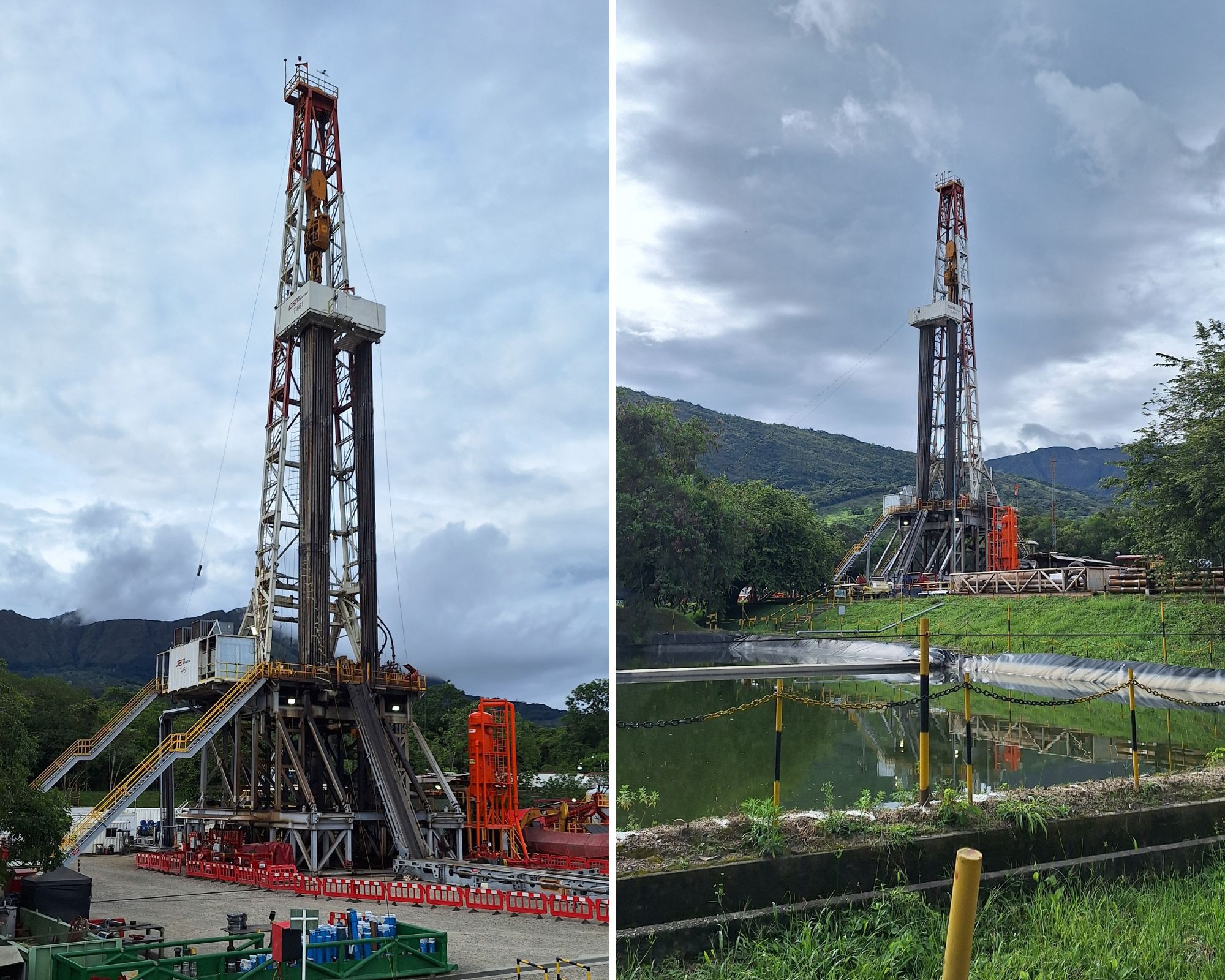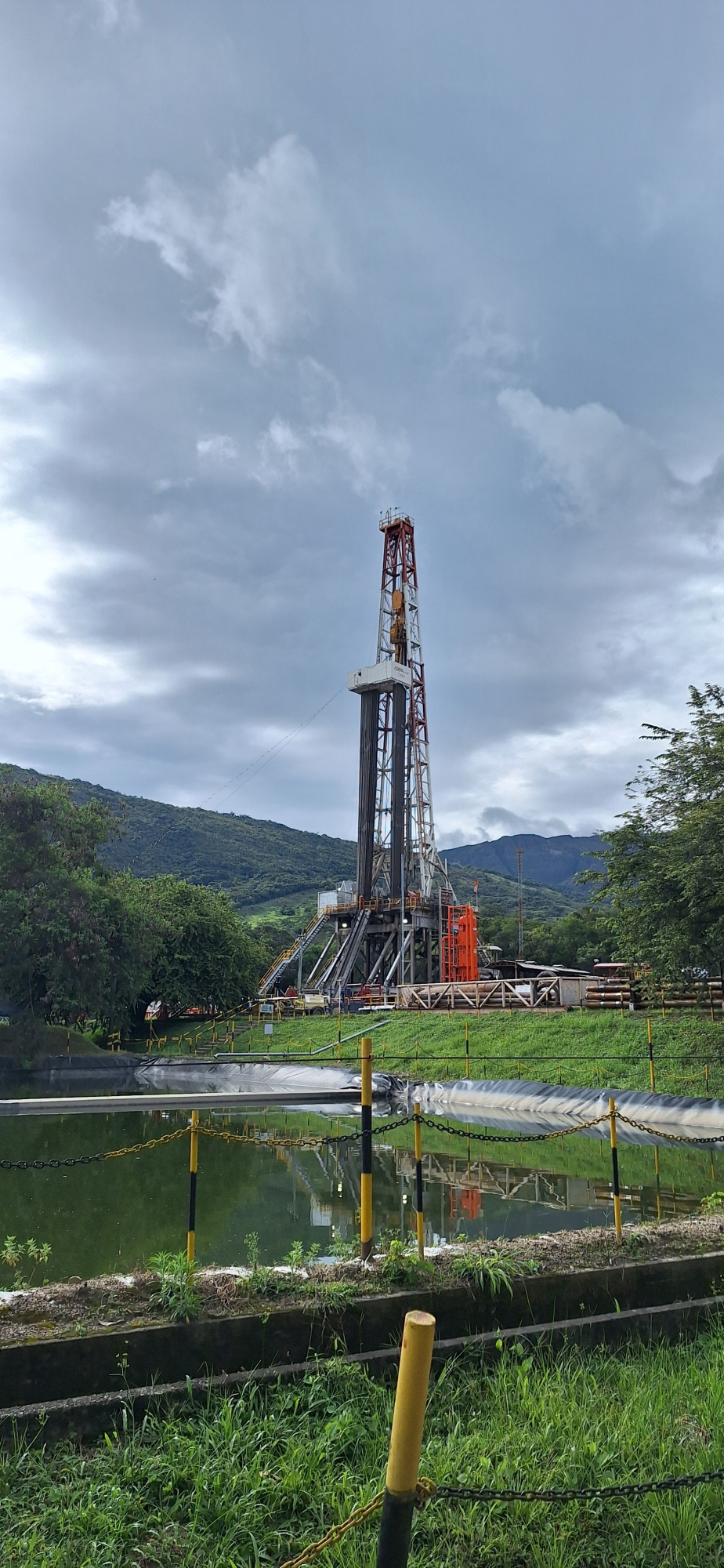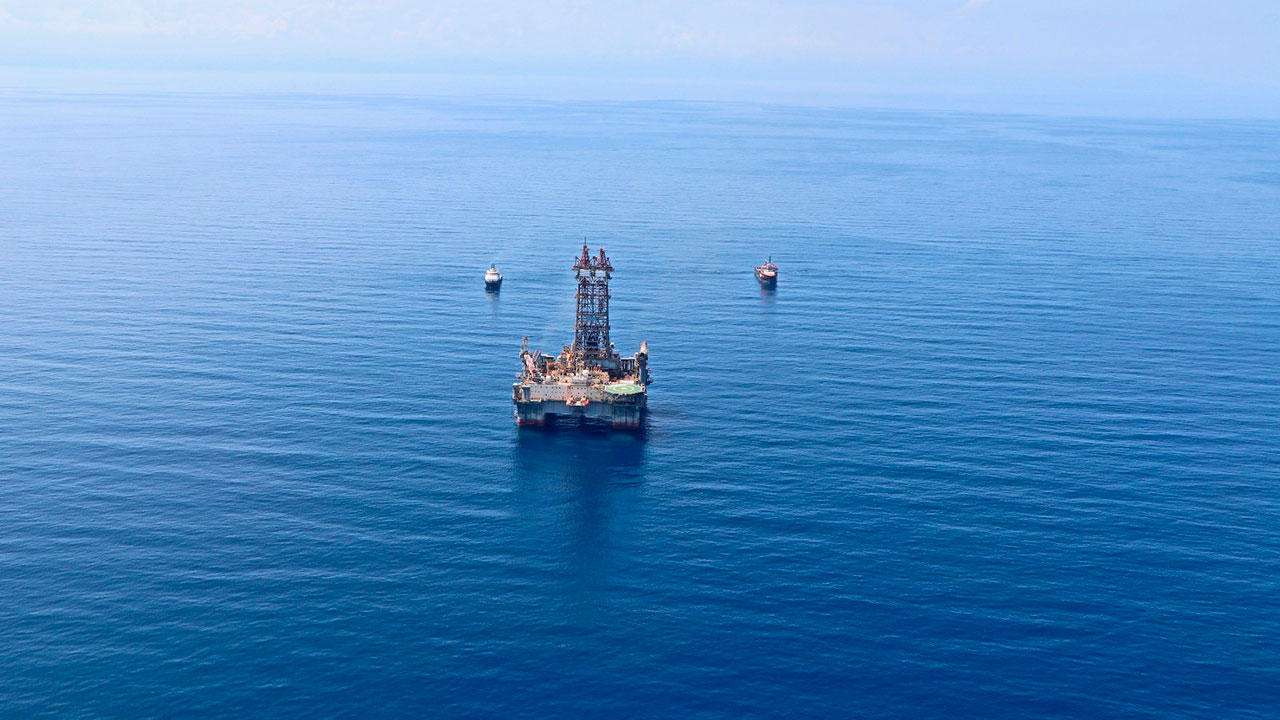The promising well that Ecopetrol has been drilling for a year and that would give Colombia a break in natural gas.

Faced with declining production from Cusiana and Cupiagua—the largest natural gas discoveries in Colombia— Ecopetrol has decided to make a significant investment in the foothills of the Llanos, where the Pauto and Floreña fields are located.
Cusiana and Cupiagua reached their peak production in the late 1990s with more than 400,000 barrels of equivalent per day, but currently contribute around 80,000 barrels of equivalent per day.
"All our investment is now focused on slowing this decline and trying to maintain volumes as much as possible. Our hopes lie in what new exploration can offer us," said Francy Ramírez, Ecopetrol's general manager of gas production.
One of these new explorations is the Floreña N18 well, located in the municipality of Yopal, Casanare department. It has been drilled for a year and has a 37 percent geological success rate.

Drilling rig for the Floreña N18 well. Photo: Lina Quiroga / EL TIEMPO
"It's not a bad percentage because it's exploration close to operating fields, and we're taking advantage of the existing platform; however, it comes with risks ," said Camilo Higuera, Ecopetrol's continental exploration manager.
Drilling of Floreña N18 began on June 16, 2024, and will be completed on October 20. It will take 16 months because the Llanos foothills are characterized by fairly hard rock, which allows drilling speeds of 50 centimeters per hour.
While in the department of Meta, wells of 3,000 meters deep are drilled in 30 days with a 1,000-horsepower drill and an investment of $15 million, in the foothills of the plains the operation is more complicated.
It is not a bad percentage because it is an exploration close to fields in operation.
A 3,000-horsepower drill, the largest currently operating in the country, is being used to drill Floreña N18. Furthermore, the construction of civil works is more complicated due to the characteristics of the terrain in the area.
Added to this is the fact that the deposits of interest are located at a depth of 6,000 meters, which requires drilling through extremely hard rock. All of this means that drilling the well will cost approximately $85 million.

Photo: iStock
Floreña N18 has a prospective resource potential of 250 million barrels of oil equivalent (including natural gas and oil), making it a significant project for Ecopetrol.
However, if the well is successful, production tests will be required to determine whether the well contains a larger or smaller volume of hydrocarbons than currently estimated. There is also the possibility that it could run dry.
Ecopetrol estimates that the first quarter of next year will see an announcement as to whether this well was indeed successful and becomes another natural gas discovery in the Llanos foothills.
If so, this finding would mean relief for Colombia, which since December 2024 has been forced to import gas to meet household demand due to the country's natural gas shortage.

Drilling rig for the Floreña N18 well. Photo: Lina Quiroga / EL TIEMPO
Fifty-one percent of the natural gas consumed in Colombia is produced in the foothills of the Llanos. And although the "hope" for natural gas lies in Pauto and Floreña, Ecopetrol has a total of 11 projects in development in this region of the country.
"We're doing a lot of things, and there's good potential. Since these are exploratory projects, not all of them will be successful, but with the portfolio we have, the potential for growth is high," Camilo Higuera emphasized.
Ecopetrol's exploration success in the Llanos foothills has been 40 percent in recent years , and one in five wells has moved on to the commercial exploitation phase.
Despite this promising potential, Ecopetrol's continental exploration manager stated that it is unlikely that the country will ever again record a natural gas discovery the size of Cusiana, located in Casanare.

Discovery of the Sirius well by Ecopetrol and Petrobras. Photo: Private archive
Therefore, Ecopetrol's hopes are focused on the offshore sector, where Sirius was discovered. It is considered Colombia's largest deepwater natural gas discovery and the only one capable of restoring the country's natural gas self-sufficiency.
In addition, the company is working with the National Hydrocarbons Agency (ANH) to reactivate eight contracts that have been suspended for 10 years in the foothills of the plains due to environmental and public order issues.
The necessary steps are being taken to resolve the problems.
These contracts are Llanos-39, Llanos-38, Llanos-52, Llanos-121, Odisea, Catleya, Sirirí, and Mundo Nuevo. "The necessary steps are being taken to resolve the environmental and security issues so they can be reactivated," reiterated Camilo Higuera.
Ecopetrol has estimated that these contracts hold potential prospective resources of between 100 and 300 million barrels of oil equivalent per opportunity. If successful, this could yield a volume of 500 million barrels of oil equivalent.
eltiempo





